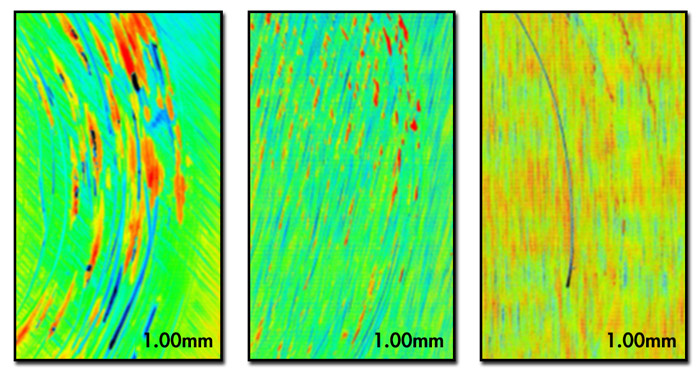EPRI Demonstrates Alloy That Could Reduce Plant Workers’ Cobalt Radiation Exposure by up to 20%
Culminating almost 30 years of materials research, EPRI has demonstrated in the laboratory a new alloy for hardfacing select nuclear plant components to improve their resistance to wear and galling, a form of damage in which material is extracted from the component’s surface. Use of this alloy, called NitroMaxx, will also help reduce worker radiation exposure. EPRI is seeking to patent NitroMaxx and in 2015 will continue to characterize its properties through laboratory and field testing.
A Tale of Three Hardfacing Alloys: Stellite, NOREM, and NitroMaxx
Power plant components are typically made by forging or casting metals and then applying surface treatments called hardfacings to provide resistance to wear and galling. In nuclear plants, cobalt-based hardfacing alloys, such as Stellite, have been used for many years because of their weldability and wear resistance. But breakdown of such materials releases elemental cobalt, which is transported through coolant flow streams into the fuel core where it is irradiated and converted to radioactive cobalt-60. This circulates back to other parts of the plant, resulting in a major source of worker radiation exposure.
Stainless steel–based hardfacing alloys have the potential to reduce cobalt-related radiation in nuclear plants by 15–20%. In the 1980s, EPRI developed such a material, called NOREM. But this and similar alloys are difficult to apply through welding and are susceptible to significant galling at temperatures above 200°C. When galling develops on the surface of a valve seat, for example, the valve may seize—potentially leading to plant safety risks. Since the 1980s, the nuclear industry has evaluated more than two dozen cobalt-free hardfacing alloys, but none has demonstrated adequate wear and galling resistance—until EPRI’s stainless steel–based NitroMaxx.
NitroMaxx grew out of four years of research and development to characterize the structural properties and degradation mechanisms of existing cobalt- and stainless steel–based alloys. In particular, EPRI researchers gained a better understanding of how galling develops. Through this work, the team figured out how to create a durable alloy that could effectively resist galling and wear.
To design NitroMaxx, researchers super-saturated the matrix of a stainless steel alloy with nitrogen—an approach that has long been known to increase hardness. One key to NitroMaxx’s galling resistance is its high strain-hardening rate—a property that allows the alloy to become harder at the surface when subjected to strain.
The manufacture of NitroMaxx is made possible through the use of powder metallurgy and hot isostatic pressing, which involve heating and consolidating metal powders. With powder metallurgy, manufacturers can optimize an alloy’s composition and structure with great precision, allowing the application of hardfacing alloys to components without welding.
NitroMaxx has potential application on many nuclear plant components, including valves, gates, and certain reactor pressure vessel internals.
From the Laboratory to the Field
In laboratory tests, EPRI researchers subjected samples of NitroMaxx, Stellite, NOREM, and other alloys to various sliding wear and galling tests at a typical nuclear plant operating temperature (343°C). Using a laser microscope to examine the resulting degradation, they determined that NitroMaxx’s resistance to galling and wear was much greater than NOREM’s and similar to Stellite’s (see images below).
In 2015, EPRI is performing additional tests in simulated nuclear plant environments to gauge NitroMaxx’s durability, corrosion resistance, and performance during temperature and pressure cycles. The next step is to work with utilities and manufacturers to field-test components in noncritical plant applications.

EPRI Technical Expert:
David Gandy


